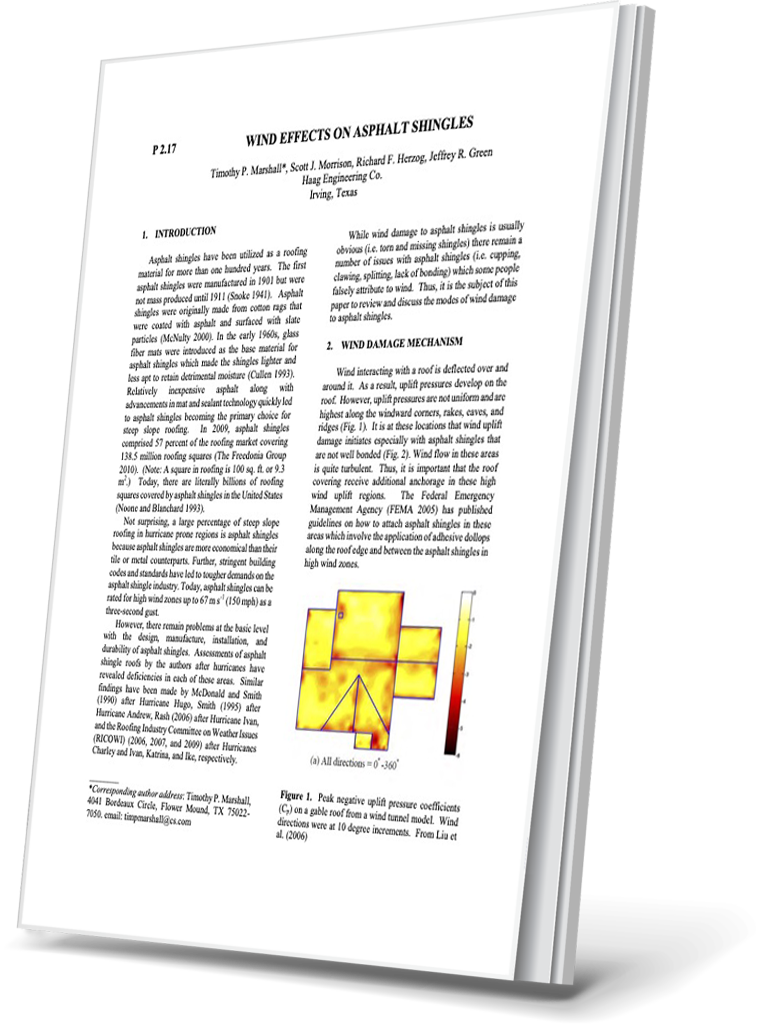Wind Effects on Asphalt Shingles
A Detailed Look at How Wind Uplifts and Damages Asphalt Shingle Roofing
Stringent building codes and standards have led to tougher demands on the asphalt shingle industry. Today, asphalt shingles can be rated for high wind zones up to 67 m s-1 (150 mph) as a three-second gust.
However, there remain problems at the basic level with the design, manufacture, installation, and durability of asphalt shingles. Assessments of asphalt shingle roofs by the authors after hurricanes have revealed deficiencies in each of these areas. Similar findings have been made by McDonald and Smith (1990) after Hurricane Hugo, Smith (1995) after Hurricane Andrew, Rash (2006) after Hurricane Ivan, and the Roofing Industry Committee on Weather Issues (RICOWI) (2006, 2007, and 2009) after Hurricanes Charley and Ivan, Katrina, and Ike, respectively.
While wind damage to asphalt shingles is usually obvious (i.e. torn and missing shingles) there remain a number of issues with asphalt shingles (i.e. cupping, clawing, splitting, lack of bonding) which some people falsely attribute to wind.
Download this paper for a review and discussion of the modes of wind damage to asphalt shingles.
- Wind Damage Mechanism
- Types of Asphalt Shingles
- Hurricane Frances Study
- Other Factors That Influence Shingle Failure in the Wind
- What is Not Wind Damage
- Mechanically-Caused Damage
- Shingle Repairs

